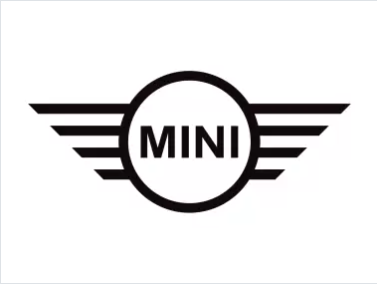Automobile Key Programming: A Comprehensive Guide
In an era of technological advancement, the automobile industry has actually made significant development in improving vehicle security and user convenience. One of the essential elements of contemporary automotive technology is automobile key programming. This process not just enables the personalization of keys however also plays an essential role in the security of vehicles. This post digs deep into the intricacies of automobile key programming, exploring its significance, techniques, challenges, and improvements in the field.
Comprehending Automobile Key Programming
Automobile key programming refers to the process of coding car keys to ensure they work as intended with the vehicle's electronic system. This process is essential for contemporary cars equipped with innovative security features, typically including transponder chips or clever keys, which communicate with the vehicle's onboard computer system.
Key Features of Automobile Key Programming:
- Transponder Keys: These are keys embedded with a chip that sends out a signal to the car's engine control system (ECU) to confirm whether the key is legitimate.
- Remote Keyless Entry (RKE): These systems permit users to open doors and start engines from a distance, offering benefit and safety.
- Smart Key Systems: Advanced systems that enable keyless entry and ignition, often featuring distance picking up technology.
The Importance of Key Programming
Key programming is important for numerous factors:
- Security Enhancement: Properly programmed keys prevent unapproved access and decrease the opportunities of vehicle theft.
- Convenience: Users can take pleasure in keyless entry and ignition, making it simpler to access their vehicles.
- Customization: Owners can customize key functions, such as setting preferences for seat positions or climate settings.
- Repair and Replacement Needs: When keys are lost or harmed, reprogramming ensures that replacements work successfully with the vehicle.
Kinds Of Key Programming
Automobile key programming can be classified into several types based on the technology utilized:
- Manual Programming: This procedure frequently includes physical interactions, such as turning the ignition switch to a specific position while pushing buttons on the key or remote.
- OBD II Programming: Many contemporary lorries utilize the On-Board Diagnostic system to program keys. This method typically needs customized diagnostic tools that link straight to the vehicle's OBD II port.
- Key Duplication: Involves developing a physical copy of the key, often without the requirement for programming, particularly with standard keys.
- Remote Reprogramming: This innovative technique might be required after a key is lost or when a vehicle is purchased from a previous owner. It guarantees that the new key is recognized by the vehicle's computer.
Typical Challenges in Key Programming
While key programming supplies many advantages, it features specific obstacles:
- Compatibility Issues: Not all keys are suitable with every vehicle, making it vital to source the right key type.
- Faulty Equipment: Programming tools can often malfunction or fail to interact effectively with the vehicle's ECU.
- Technical Knowledge Requirement: A solid understanding of vehicle electronics and key programming techniques is necessary for effective programming.
- Cost: Depending on the kind of key and system, programming can sometimes be pricey, specifically at dealers.
The Process of Key Programming
The process for key programming can vary commonly depending on the vehicle design and the type of key involved. Below is a general introduction of the actions included:
Gather Required Information:
- Vehicle Identification Number (VIN)
- Make, design, and year of the vehicle
- Type of key (traditional, transponder, clever)
Select Appropriate Tools:
- OBD II scanner or suitable programming gadget
- Keys or remotes to be programmed
Follow the Programming Steps:
- For standard keys: Insert the type in the ignition and follow the manual guidelines.
- For transponder keys and RKE: Connect the programming tool to the OBD II port, input the required info, and follow triggers on the screen.
Check the Key:
- Ensure that the new key begins the vehicle and operates any additional functions, such as main locking.
FAQs about Automobile Key Programming
Q1: What kinds of vehicles need key programming?A1: Most contemporary lorries equipped with electronic ignition systems, consisting of transponder keys and smart keys, need programming. Older vehicles may use traditional keys that do not require programming. Q2: Can I program a car key myself?A2: While some key types can be self-programmed using producer instructions, numerous contemporary keys require specific equipment and proficiency, often demanding expert assistance. Q3: How do I understand if my car key needs programming?A3: If a brand-new or replacement key does not start your car, or if the key functions(like remote locking)aren't working, it likely requirements programming to integrate with the vehicle. Q4: Is key programming expensive?A4: The cost of key programming can vary based on the vehicle make and design, kind of key, and whether a professional is needed. Costs normally range from ₤ 50 to ₤ 300. Q5: What ought to I do if I lose my car
key? official source : If you lose your key, it's advisable to consult your vehicle dealer or an expert locksmith who concentrates on key programming to get a replacement made and programmed.
In an age where vehicle security and benefit
are paramount, automobile key programming stands apart as a vital service in automotive care. Understanding the significance, types, difficulties, and procedures involved
can empower vehicle owners to make informed decisions regarding their automotive key requirements. As innovation continues to progress, so too will the processes and tools needed for effective key programming, ensuring vehicle security remains a top priority. With the right info and support, mastering key programming can be a simple process, enhancing both the safety and performance of contemporary vehicles.

